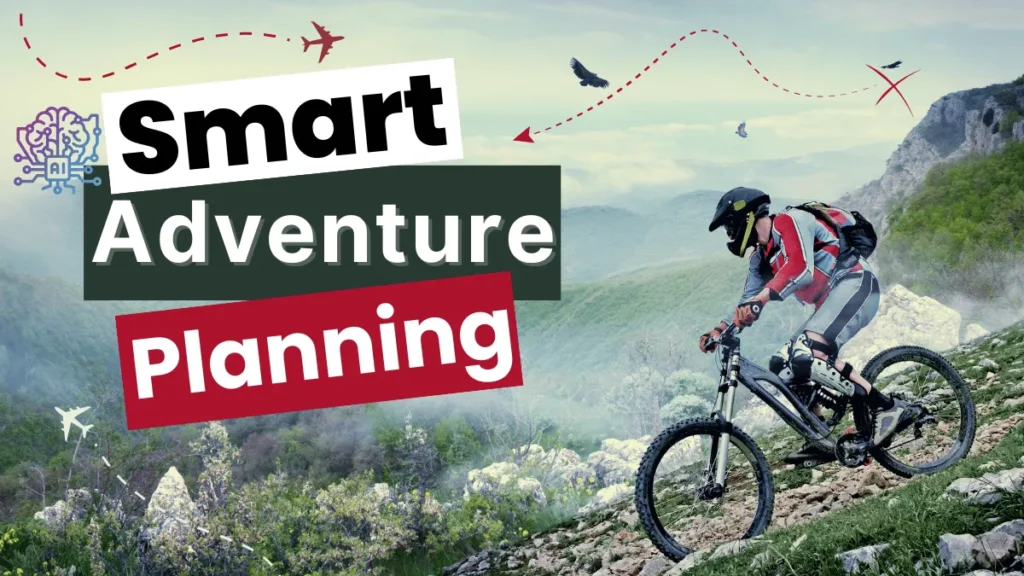
Modern adventurers have a powerful ally in artificial intelligence. From accurate trail mapping and real-time weather forecasting to dynamic route optimization, AI tools can transform how you plan and execute outdoor excursions. This SEO-optimized guide explores the top AI applications for your next hiking, biking, or backpacking trip—ensuring safety, efficiency, and unforgettable experiences in 2025.
The Rise of AI in Outdoor Recreation
- Data-Driven Decisions: AI processes satellite imagery, historical weather data, and trail conditions to provide actionable insights.
- Personalization: Machine learning algorithms tailor recommendations based on your fitness level, pace, and preferences.
- Real-Time Adaptation: AI-powered apps can reroute you around hazards or optimize pace if weather changes suddenly.
AI-Powered Trail Mapping
Satellite & Drone Imagery Analysis
- Tools like Mapbox and Esri’s ArcGIS use AI to stitch high-resolution imagery into dynamic 3D maps.
- Benefits: Identify washed-out sections, fallen trees, or newly formed streams before you hit the trail.
Automated Topographic Profiling
- AI models analyze elevation data to generate grade-adjusted profiles, helping you anticipate steep climbs or descents.
- Use Case: Plot elevation gain/loss to match your endurance level and avoid overexertion.
Predictive Weather Forecasting
Hyperlocal Weather Models
- Services like Tomorrow.io and OpenWeatherMap leverage AI to provide minute-by-minute precipitation and wind predictions at your exact GPS coordinates.
- Why It Matters: Sudden thunderstorms or high winds can be life-threatening in exposed terrain.
Wildfire & Air Quality Alerts
- AI integrates satellite fire-hotspot data and wind models to forecast smoke plumes and air quality indices.
- Pro Tip: Use Fires Near Me or SmokeSense apps for early warnings and detours.
Also Check: Family-Friendly Adventure: Best Day Trips Near Sydney
Dynamic Route Optimization
Machine Learning-Based Routing
- Platforms like Komoot and AllTrails employ AI to suggest the most efficient or scenic path, balancing distance, elevation, and trail difficulty.
- Adaptive Replanning: If you slow down or conditions worsen, the app recalculates ETA and suggests alternative segments.
Energy-Aware Algorithms
- Cutting-edge research uses physiological data (heart rate, pace) combined with terrain models to minimize fatigue.
- Future Outlook: Wearables syncing with AI will dynamically adjust your route to include rest stops or water sources when needed.
Safety & Emergency Response
Automated SOS & Location Sharing
- AI-enabled satellite communicators (e.g., Garmin inReach) detect sudden stops or falls and alert rescue services with GPS.
- Group Tracking: Teams can share live locations in an encrypted network to prevent separation.
Predictive Risk Zones
- AI models analyze historical incident data—rockfall, flash floods, avalanches—to flag high-risk areas on your map.
- Decision Support: Warnings appear pre-departure and on-route to guide you around hazards.
Keyword focus: “AI hiking safety,” “predictive risk modeling,” “automated SOS AI”
Integrating AI Tools into Your Gear
| Function | Recommended Tool/App | Key Feature |
|---|---|---|
| Trail Mapping | Mapbox, Gaia GPS | 3D terrain visualization |
| Weather Forecast | Tomorrow.io, Windy | Hyperlocal, minute-level updates |
| Route Optimization | Komoot, AllTrails | Adaptive real-time rerouting |
| Emergency Communication | Garmin inReach, SPOT X | Fall detection, two-way satellite SMS |
| Risk Alerts | Fires Near Me, Avalanche.org | Fire hotspots, avalanche forecasts |
Pro Tip: Ensure all devices are fully charged and carry portable solar chargers for multi-day treks.
Best Practices for AI-Enhanced Adventures
- Validate AI with Local Knowledge: Cross-check AI recommendations against park ranger advice or local guide insights.
- Use Offline Capabilities: Download maps, weather models, and route plans before heading into no-signal zones.
- Calibrate to Your Strategy: Input realistic fitness and gear-carrying weights to improve AI’s accuracy.
- Regularly Update Apps: AI models improve with new data—keep your apps and firmware current.
Conclusion
AI is revolutionizing adventure planning by offering unprecedented accuracy, personalization, and safety. By combining AI-powered trail mapping, predictive weather forecasting, and dynamic route optimization, you can tackle more ambitious treks with confidence. Embrace these smart tools in 2025 to transform your next outdoor adventure into a seamless—and safer—experience.
